 Your new post is loading...
 Your new post is loading...
Gamification can be found everywhere—from boardrooms to classrooms, and even on social media. The practice has gained widespread recognition over the last few years through its incorporation into marketing, healthcare, business, politics, and technology design. Subsequently, pharma is embracing the recent trend in healthcare gamification, and utilising this technology to engage both healthcare providers (HCPs) and payers (including patients). Research and case studies provide evidence that healthcare gamification improves both patient compliance and health outcomes. Using gamification as part of a marketing strategy can help companies deliver their message to a wider audience and boost marketing efforts in several ways. - Gamification can promote therapies.
- Gamification can increase engagement between pharma, HCPs, and patients.
- Gamification can facilitate physician education.
Interactive creativity, coupled with proactive health information endorsement, can help build the reputation of brand, increase customer engagement, and improve consumer loyalty. Although gamification within pharma marketing is still in its early stages, with several challenges to successful implementation, the potential benefits are wide-reaching. Indeed, the effective use of gamification could take pharmaceutical marketing to entirely new heights. Further Reading:
Via Pharma Guy
Gamification has a perennial presence at health tech conferences, but never seems to take central stage. At a late-day session at HIMSS16, Amanda Havard, Chief Innovation Officer at Health: ELT and Charlie Schroder, a digital strategist and consultant, talked about what’s holding the space back and how health stakeholders can launch gamified apps that work.
One topic that frequently comes up in gamification discussions is “pointsification”, or apps where the only game-like strategy is the use of badges and points to motivate people. While Havard and Schroder acknowledged the controversy about whether that really counts as gamification, they also said that points and badges are very powerful motivators and shouldn’t be dismissed.
“If you want somebody to do something, go to the next screen, or get them to physically go to a place, use the location services, have them check-in, and give a happy little exploding confetti reward for that on the phone, and you’d be shocked at how effective that is,” Havard said.
“In Silicon Valley we’ve played around with a number of incentives including cash rewards versus badges and points, and badges and points win out every time over cash, over anything tangible, and it’s across every demographic,” Schroder added.
The two cited several examples of healthcare gamification efforts with powerful effects. One game, from 1997, was designed to help kids manage diabetes and led to a 77 percent reduction in urgent care visits. In another case, kids who played Super Mario Bros before surgery had a dramatic reduction in anxiety both before and after surgery. In another, people were motivated to exercise after doing virtual exercise in a game with an avatar that looked like them.
During the question and answer period of the session, Havard and Schroder addressed why such positive data didn’t lead to broader adoption or more attention on the space.
“There are a lot of question marks over therapy that’s a digital tool — Where does that fall? Who needs to say that’s ok? Is there liability attached to that?” said Havard. “I tend to think that the unknown aspect here is what’s really keeping this from blowing up. If you think about what would happen if you had a drug that posted these kinds of numbers, that’s great, but that’s because there’s already a concrete vetting process of how you do a clinical trial, how you evaluate a drug.”
In order to make gamified apps and health games work in the real world, Havard — whose background is in working with Medicaid populations — had a number of concrete suggestions for healthcare stakeholders. The overarching theme was the importance of taking games seriously.
“You need executive buy-in,” she said.
Via Pharma Guy
Ayogo, a Vancouver-based digital health company, has raised $2.5 million in a Series A round to boost sales and marketing for a gaming platform to encourage people with chronic conditions to...
Via Celine Sportisse
El pasado 23 de abril, celebramos el Día del Libro en SocialBiblio aprendiendo un poco más sobre la gamificación en la educación y la formación, de la mano de Miguel Castillejo, que nos habló de la...
Via A Petapouca, Giuseppe Fattori
Dans l’écosystème Internet, le webmarketing est devenu un art à part entière. En maîtriser les leviers permet aux cybermarchands de booster leurs ventes de manière significative. Les professionnels du tourisme en ligne ont donc tout intérêt à en apprendre les grands principes, les tendances e...
Via Audrey Bardon

|
Rescooped by
Lionel Reichardt / le Pharmageek
from Must Play
March 4, 2014 3:46 AM
|
There's a lot of misinformation on how gamification is supposed to work and I'm going to dispel some of those ideas.
Via Martin (Marty) Smith
The success of games in the general marketplace has redefined expectations in the learning sphere, bringing with it a paradigm shift in design.
There seems to be three main reasons for the increase in gamification: marketplace forces, the connection between games and learning in children, and rising interest in games among adults.
Via The Learning Factor

|
Rescooped by
Lionel Reichardt / le Pharmageek
from Must Play
March 4, 2014 3:49 AM
|
I was recently asked whether gamification could be of use to a company. My short answer was "yes, if done right".
Intermediate/ Excerpt...
Some say gamification is currently at a state of inflated expectations. If pursuing gamification solutions, their recommendations are: -- > Organizations must understand the potential of gamification to design behaviours, develop skills, enable innovation and begin to deploy low-risk applications. -- > Gamification project managers must engage game designers or organizations with experience in gamification in early implementations. -- > Strategic planners must learn how gamification is being applied in their industries and how their organizations can leverage gamification to engage employees or customers. -- > Business managers must assess the impact of the longer-term discontinuities that gamification will cause and begin to position their organizations to capitalize on the trend. -- > Any design with gamification in mind must have business objectives clearly defined in order to design an experience that does not disappoint. -- > In addition, the user experience should be thoroughly and iteratively tested during development. __________________________________ ► NEW: iNeoMarketing makes content marketing easy with the new Q8 Content. Q8 fills your content pipeline daily with relevant articles that your audience wants to read. Learn more and sign up for the beta program: http://www.Q8content.com. ► Receive a FREE daily summary of The Marketing Technology Alert directly to your inbox. To subscribe, please go to http://ineomarketing.com/About_The_MAR_Sub.html (your privacy is protected).
Via Joemktg
Digest...
Tips for using gamification in your content marketing strategy
1. Start small. If you've never tried gamification, it's a good idea to start with a simple "game" so you can gauge results and become familiar with how the theory works. A good way to start is rewarding visitors for liking your Facebook page, following your company site on Twitter or viewing your videos on YouTube.
2. Break up the "game" into manageable pieces. If your game or the reward system you're creating for your Web site is so complex that you need a two-inch-thick manual to figure it out, your site visitors are going to throw up their hands in dismay. A better approach is to divide the new activities and new goals into small pieces that visitors can learn about gradually.
3. Tie gamification to your marketing goals. While it's exciting to see a surge in site visitors due to your new gamification plan, make sure to structure your plan so that such visitors don't just "play" your game and exit the site, doing little towards increasing your bottom line or creating better product awareness.
4. Get help. Gamification can be a little tricky, especially when you first begin. Plus, unlike traditional content marketing, it requires regular maintenance and updating. If you're like most small business/Web site owners, you're already wearing a number of hats. There are several companies, such as Badgeville and Gigya, that specialize in creating and administering gamification programs. ___________________________________ -Receive a FREE daily summary of The Marketing Technology Alert directly to your inbox. To subscribe, please go to http://ineomarketing.com/About_The_MAR_Sub.html (your privacy is protected). -If you like this scoop from The Marketing Technology Alert (brought to you by iNeoMarketing), PLEASE share by using the links below.
Via Joemktg
Details of three new gamified health products: Cellnovo – a gamified diabetes tracking package with a mobile handset, web app, and insulin pump HealthPrize – a medicine adherence application that rewards you for taking your medicine Hubbub Health – a social health network that combines gaming, daily challenges, and a community to promote physical and mental wellness
Via Thomas N. Burg, Dimitra Kontochristou, Giuseppe Fattori, Lionel Reichardt / le Pharmageek
Michael Wu, Ph.D. is Lithium's Principal Scientist of Analytics, digging into the complex dynamics of social interaction and group behavior in online communities and social networks.
Via The Digital Rocking Chair
|
Akili Interactive Labs will soon launch a clinical trial, called STARS-ADHD, that will evaluate the efficacy of its video game intervention for children with ADHD. The company plans to enroll a minimum of 300 children aged 8 to 12 years for its double-blind, randomized, controlled trial. “Project: EVO has shown early promise to help improve attention and neurocognition in cognitive disorders like ADHD,” STARS-ADHD Principal Investigator Scott Kollins, who is a professor of psychiatry and the director of the ADHD Program at Duke University School of Medicine, said in a statement. “We look forward to enrolling patients and advancing the study and validation of this potential new treatment option for young patients with ADHD.” Akili’s offering, a video game called Project: Evo, is based on research from UCSF. The game is designed to treat cognitive conditions. To play it, a user navigates an alien avatar, chosen specifically because it is culture-neutral but also relatable, down a course by tilting a mobile device back and forth. While navigating the alien, the user must also respond to targets by tapping the screen. The app keeps track of movements and can therefore monitor the user’s behavior and quickly adapt to the player. If the STARS-ADHD trial, which has been in piloting phase since November, meets certain goals, the company will submit an application for an FDA clearance.
Via Pharma Guy
Chicago-based startup, Benecure, is looking to help make long-term behavior change for those with chronic conditions more feasible with a mobile platform that utilizes gamification, tracking and incentives. The company’s...
Via Celine Sportisse
Présentation du projet de coaching via serious game retenu pour la finale du Tour de France du Numérique. Le projet a été réalisé avec le Pr. Arnaud Dupeyron e…
Via Yasmine Kasbi

|
Rescooped by
Lionel Reichardt / le Pharmageek
from Must Play
March 4, 2014 3:45 AM
|
Gamification 101: What You Need to Take Engagement to the Next Level
Business 2 Community
Technology is having a huge impact on the way companies engage employees and customers. Enter gamification. What is it and why should you care about it?
Via Martin (Marty) Smith
Traduction de ma carte "History of Gamification". Je participe au MOOC "Gamification" sur Coursera, cours du professeur Kewin …
Via Marco Bertolini

|
Rescooped by
Lionel Reichardt / le Pharmageek
from Must Play
March 4, 2014 3:46 AM
|
Gamification has quickly become a super trend in marketing, customer retention and employee engagement. Check out this new infographic: The Business of Gamification.
Marty Note
Not sure why this is an infographic, but information is helpful and well presented. Gamification WORKS online. Don't be turned off by the famous Forrester report saying 80% of all gamification will fail. Duh, 80% of anything online fails. Gamification connects visitors to your content or THEIR content on YOUR website (even better). Gamification rocks online marketing.
Via Martin (Marty) Smith

|
Rescooped by
Lionel Reichardt / le Pharmageek
from Must Play
March 4, 2014 3:46 AM
|
As effective as gamification is for driving conversions, it can be difficult and tricky to formulate a gamification strategy optimized for your business's specific goals. Thus, we've outlined a few universal tips for implementing an ...
Via Jody_COC, Martin (Marty) Smith
How do game-based learning, gamification, and eLearning designers learn ways to increase engagement and effectiveness in corporate training? By looking at popular games!
Via Christopher Pappas
The video game industry is worth more than $100bn worldwide, so it's no surprise that businesses are using gamification to try to boost sales. The idea is that by adding gaming elements to the sales process, such as small challenges and rewards, you can increase customer loyalty and advocacy. As in every game or competition, the participants have to be motivated by a worthwhile reward. It’s also true that the greater the reward, the more you can ask people to do to earn the reward.
Via Martin Gysler, Lionel Reichardt / le Pharmageek
The term is designed as “the use of game design elements in non-game contexts.” If you start to think in terms of points, levels and achievements, you’ll begin to understand how gamification is attracting many of today’s educators like Montana history teacher Taylor Nix, who grabbed his students’ interest by creating a role-playing game for his class.
Via Romain DEVICHI, Nathalie LAMRI
|



 Your new post is loading...
Your new post is loading...

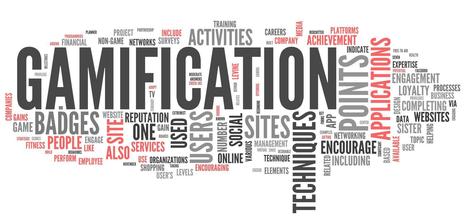



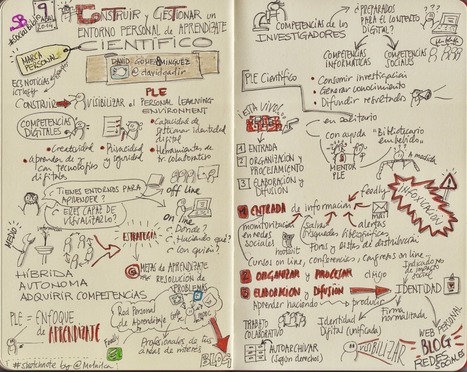


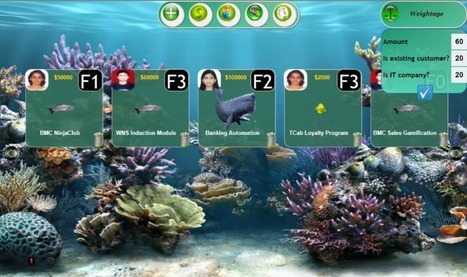












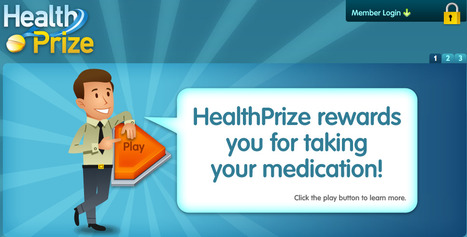
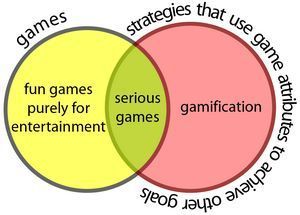
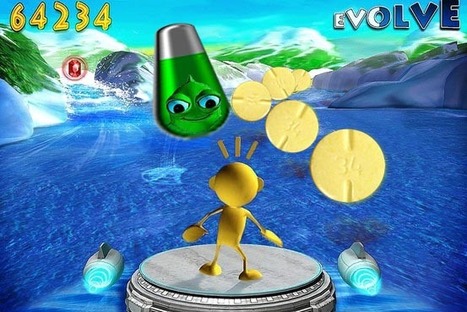

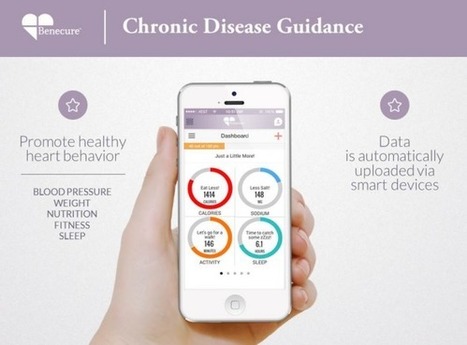





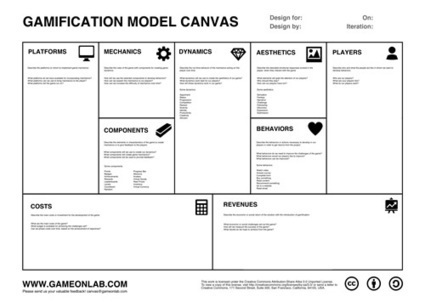











The author claims that "gamification" improves patient compliance and health outcomes and that it can help pharma marketers deliver their message. Unfortunately, little evidence of this is provided.